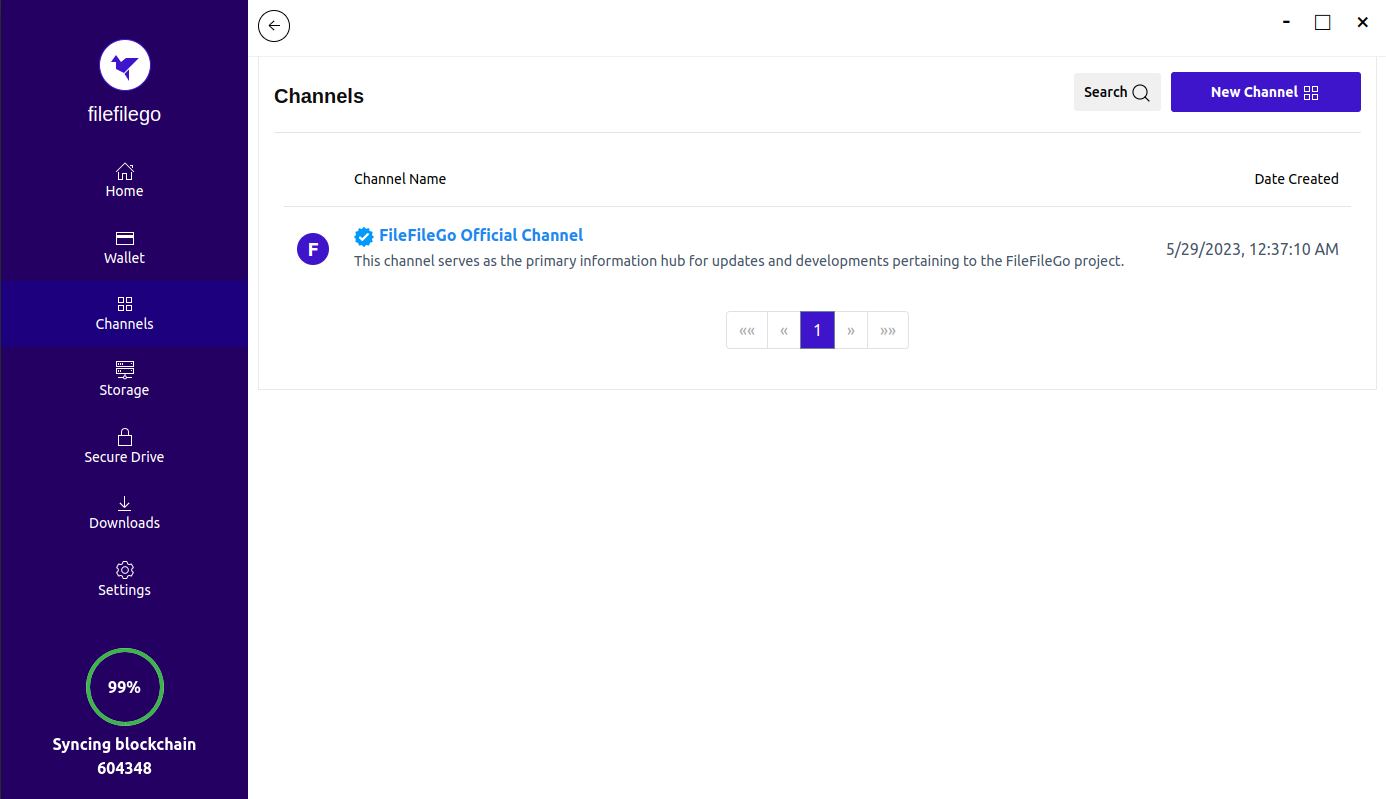Decentralized Storage
In filefilego, you can distribute data across multiple nodes for increased security, resilience, and accessibility. Start your storage node to join our global network.
A Peer-to-peer, censorship-resistant, and a privacy-focused data storage & sharing network
Download UI or CLI Read more1 Blockchain verifiers are responsible for running the PoA/PoS consensus algorithm and seal blocks which are then broadcasted to the network.
2 Data verifiers are part of the Proof of Transfer (PoX) and Proof of Data Possession (PoDP) consensus mechanisms. The participating nodes of the network achieve consensus on the validity of data transfer between "Storage Providers" and other nodes.
3 Storage providers utilize the Storage engine to host data that are referenced by the blockchain channels.


1 The core component of filefilego is the blockchain itself which currently uses PoA consensus mechanism and soon migrates to PoS (Proof-of-Stake). Libp2p is utilized for peer-to-peer communication and networking.
2 With Proof of Transfer (PoX), we make it possible to verify that data have been transferred from one node to another without downloading a copy of it. We use novel data structures and cryptography to perform the verification process.
3 Off-chain data integration with the blockchain allows us to store arbitrary-length files off-chain and link them to on-chain entities. Storage engine exposes an API that allows DApps and programs to upload data to the node with a proper authorization mechanism.
4 Search accuracy and flexibility are as important as the core blockchain. Our implementation supports complex queries including binary searches using a specific query language.
In filefilego's data network, relationships of hierarchical data are represented using an abstraction model which is similar to Unix's "Everything is a file" concept.
In filefilego, you can distribute data across multiple nodes for increased security, resilience, and accessibility. Start your storage node to join our global network.
File/data sharing is the building block of filefilego. You can browse and access different channels or create your own channel to organize and share data with other people or machines.
Filefilego can be used as a marketplace that facilitates the buying and selling of data. Data owners can create their dedicated channels and monetize their data.
The decentralized data sharing network's journey began with the conception of the initial idea, followed by a thorough feasibility assessment, development of a minimum viable product (MVP) and proof of concept (POC), testing and iteration, alpha and beta releases, community engagement, security and scalability enhancements, public release, continuous improvement, and ecosystem expansion.
We initiated the construction of the CLI using Golang and proceeded with the implementation of the blockchain and core logic components.
In order to facilitate user interaction with the blockchain, it was necessary to develop a comprehensive user interface (UI) encompassing the wallet and all the functionalities provided.
By this stage, we had successfully developed a proof of concept and attained a functional version of filefilego.
filefilego's testnet was launched. We discovered the bugs and improvement needed for the system to go to production.
From the experience gained developing the MVP, we decided to rewrite the software in a modular and extensive way.
At this stage we are running filefilego in production.
We released the mobile wallet which can be used to manage keys and send/receive coins.
FileFileGo UI was re-written from scratch and released on windows, linux and macOS. We also released our payment system where users can buy FFG coins through our website.
There is always room for improvement. We go through the software and track issues/bugs and try to fix them in short iterations with new releases.
We will focus on marketing and creating incentive programs for storage providers to join the network so we can increase the capacity of our network storage.
Filefilego listing on trusted exchanges.
The goal is to develop additional APIs in popular programming languages to allow software use the filefilego network programmatically.
Moving forward we plan on developing cross-chain protocols to allow filefilego communicate with other blockchains and transfer any asset.

Using FileFileGo UI you can send and receive native FFG coins and interact with the features of the network such as data downloads.

You can download pre-built binaries or install from the source code. We provide detailed compilation and installation instructions for each operating system/platform.
Skip this section if you have already downloaded and installed the above binaries.
A full node is a program that fully validates transactions and blocks. All full nodes also help the network by accepting transactions and blocks from other full nodes, validating those transactions and blocks, and then relaying them to other full nodes. Please check the documentation for running a full node.